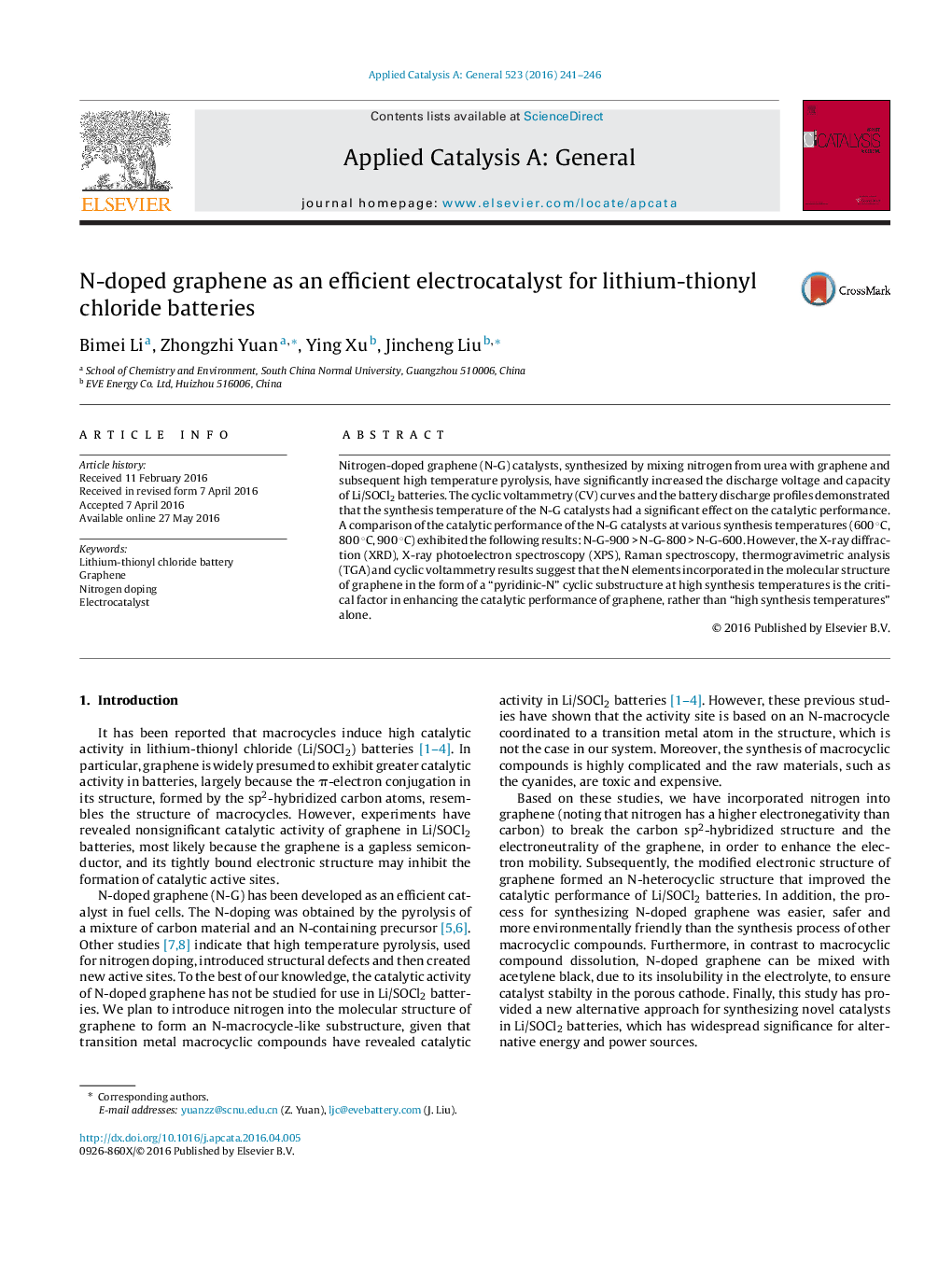| Article ID | Journal | Published Year | Pages | File Type |
|---|---|---|---|---|
| 38770 | Applied Catalysis A: General | 2016 | 6 Pages |
•Graphene and 900 °C-treated graphene have nonsignificant catalytic activity for Li/SOCl2 batteries.•The N-doped graphene, synthesized easily at high-temperature pyrolysis of graphene and urea mixture, showed efficient catalytic activity to SOCl2 reduction.•The catalytic effect on N-G is attributed to a macrocyclic substructure comprising mainly pyridinic-N, which N is incorporated into the molecular structure of graphene to change the charge distribution.•Pyridinic-N and the adjacent C atoms form catalytic active sites in the graphene.
Nitrogen-doped graphene (N-G) catalysts, synthesized by mixing nitrogen from urea with graphene and subsequent high temperature pyrolysis, have significantly increased the discharge voltage and capacity of Li/SOCl2 batteries. The cyclic voltammetry (CV) curves and the battery discharge profiles demonstrated that the synthesis temperature of the N-G catalysts had a significant effect on the catalytic performance. A comparison of the catalytic performance of the N-G catalysts at various synthesis temperatures (600 °C, 800 °C, 900 °C) exhibited the following results: N-G-900 > N-G-800 > N-G-600. However, the X-ray diffraction (XRD), X-ray photoelectron spectroscopy (XPS), Raman spectroscopy, thermogravimetric analysis (TGA) and cyclic voltammetry results suggest that the N elements incorporated in the molecular structure of graphene in the form of a “pyridinic-N” cyclic substructure at high synthesis temperatures is the critical factor in enhancing the catalytic performance of graphene, rather than “high synthesis temperatures” alone.
Graphical abstractFigure optionsDownload full-size imageDownload high-quality image (125 K)Download as PowerPoint slide
